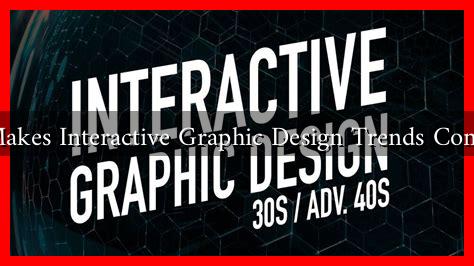-
Table of Contents
What Makes Interactive Graphic Design Trends Compelling
In the ever-evolving world of graphic design, interactivity has emerged as a powerful tool that captivates audiences and enhances user experience. As technology advances, so do the methods and trends in graphic design, making it essential for designers to stay updated on what makes interactive designs compelling. This article explores the key elements that contribute to the effectiveness of interactive graphic design trends, supported by examples, case studies, and relevant statistics.
The Importance of Interactivity in Design
Interactivity in graphic design refers to the ability of users to engage with visual content actively. This engagement can take many forms, from simple hover effects to complex animations and user-driven narratives. The importance of interactivity can be summarized in the following points:
- Enhanced User Engagement: Interactive designs encourage users to participate rather than passively consume content, leading to a more memorable experience.
- Improved Retention: Studies show that interactive content can increase information retention by up to 70% compared to static content.
- Personalization: Interactive designs can adapt to user preferences, creating a tailored experience that resonates with individual users.
Key Elements of Compelling Interactive Graphic Design
Several elements contribute to the effectiveness of interactive graphic design trends. Understanding these components can help designers create more engaging and impactful work.
1. User-Centric Design
At the heart of compelling interactive graphic design is a user-centric approach. Designers must prioritize the needs and preferences of their target audience. This can be achieved through:
- User Research: Conducting surveys and interviews to understand user behavior and preferences.
- Usability Testing: Iteratively testing designs with real users to identify pain points and areas for improvement.
For example, the website Airbnb employs user-centric design by allowing users to filter search results based on their specific needs, enhancing the overall experience.
2. Visual Storytelling
Interactive graphic design is an excellent medium for visual storytelling. By combining visuals with narrative elements, designers can create a more immersive experience. Key strategies include:
- Sequential Narratives: Using animations or transitions to guide users through a story.
- Data Visualization: Presenting complex data in an engaging way, such as through interactive infographics.
A notable example is the New York Times COVID-19 interactive map, which effectively tells the story of the pandemic through data visualization, allowing users to explore the information dynamically.
3. Aesthetic Appeal
While functionality is crucial, aesthetic appeal cannot be overlooked. A visually striking design can draw users in and keep them engaged. Considerations include:
- Color Schemes: Using color psychology to evoke emotions and guide user actions.
- Typography: Selecting fonts that enhance readability and align with the brand’s voice.
For instance, the website Apple utilizes a clean, minimalist design that emphasizes its products, making the user experience both enjoyable and efficient.
Case Studies: Successful Interactive Designs
Several brands have successfully implemented interactive graphic design trends, showcasing their effectiveness:
- Spotify: The “Wrapped” campaign allows users to interactively explore their listening habits over the year, creating a personalized experience that encourages sharing on social media.
- Google Doodles: These interactive logos often celebrate holidays or events, engaging users with games or animations that encourage exploration.
Conclusion
Interactive graphic design trends are compelling due to their ability to engage users, enhance retention, and create personalized experiences. By focusing on user-centric design, visual storytelling, and aesthetic appeal, designers can create impactful interactive content that resonates with audiences. As technology continues to advance, staying abreast of these trends will be crucial for designers looking to make their mark in the digital landscape. Ultimately, the future of graphic design lies in the ability to create experiences that are not only visually stunning but also deeply engaging and interactive.

